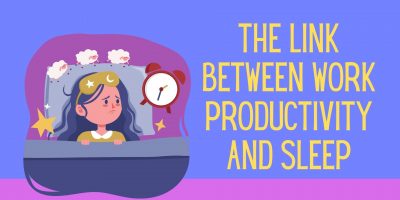
Leveraging Technology to Facilitate Wellness in the Workplace
In this era of digital transformation, technology has emerged as a powerful catalyst, amplifying the reach and impact of employee wellness programs in the workplace.

Companies everywhere are becoming more aware of the importance of a healthy workplace. But, promoting employee health cannot be done on its own. Company culture plays a significant role since culture and wellbeing are closely intertwined.
Many employers implement wellness programs but fail to build a culture of wellbeing. Behavior changes happen because of a movement, not a mandate.
Hence, the ROI and VOI of a wellbeing program depend on durability.
It doesn’t matter how extensive or cutting-edge the offerings are if the company itself doesn’t have a settled culture that fosters wellbeing.
Therefore, the sooner an organization realizes the close connection between culture and wellbeing and starts to address them both as one, the better outcomes the established wellness programs will have.
A company’s culture is its heart and soul.
It includes values, beliefs, roles, communication, attitudes, and traditions. In short, it reflects everything the company does. There are significant benefits to having a solid and unified company culture.
It attracts top talent, and more importantly, it retains that talent. Since workers feel like they belong, they are more likely to stay loyal to the organization. This results in lower turnover rates and stronger relationships among co-workers.
Employees that can identify with their company’s values are likely to be more productive and enthusiastic about their work. One survey shows that 86% of employees believe that company culture impacts productivity. According to another study, companies with strong cultures have 72% higher employee engagement rates.
Sharing the same ideals also increases trust between the business and its employees. Suppose the culture allows people to feel authentically valued and supported. In that case, they will trust the intentions behind any call-to-action the company makes.

Every little change in a company’s culture impacts employees.
Therefore, it is no surprise that culture and wellbeing are interconnected. If a company’s goal is to support and empower employees to make healthy lifestyle changes, then it must first develop a culture of wellbeing in the workplace.
Nurturing a culture of wellbeing means taking initiatives that support people in achieving complete health. According to WHO, “Health is a state of complete physical, mental and social wellbeing and not merely the absence of disease or infirmity.”
Therefore, when a company wants to develop a culture of wellbeing in the workplace, it must consider the different aspects of health.
Data shows that more than 50% of companies mainly focus on emotional wellbeing since it is the number one reason for long-term absence.
Around 30% of businesses also promote social relationships and physical health. However, financial wellbeing remains the most neglected aspect, with only 12% of firms focusing on it.
Considering this data, and the close relationship between culture and wellbeing, for a company to develop a strong culture of wellbeing, it must focus on the overall emotional, social, financial, and physical tenets.
Even though culture is embedded in a company’s DNA, it is possible to change it.
Since the leadership’s work styles and views on what is valuable reinforce culture, the change must start at the top.
There are three main phases toward developing a culture of wellbeing. The first stage is investigating and assessing the current culture to figure out what is missing. Once it is clear what the gaps are, designing the preferred culture follows. The final phase is implementing the culture and finding ways to maintain it in the future.
To ensure the success of the three phases, the company should take specific steps.

The gap between culture and wellbeing is tiny, but once it is closed, it brings tremendous benefits to a company. It sustains employee engagement and enthusiasm and retains and maintains a top-talent workforce that is healthier and happier.
This impacts the bottom line in more ways than one. Once wellbeing becomes something a company is, not what it does, intrinsic behavior change is the prize. This is a multi-pronged, multi-year approach that requires trial and error. However, a wellbeing strategy that understands the power of culture is sure to succeed.
Browse our curated list of vendors to find the best solution for your needs.
Subscribe to our newsletter for the latest trends, expert tips, and workplace insights!

In this era of digital transformation, technology has emerged as a powerful catalyst, amplifying the reach and impact of employee wellness programs in the workplace.

As sleep deprivation significantly affects work performance, is the tradeoff between employees working long hours or being available 24/7 worth it?

Discover flexible benefits plan’s role in improving recruitment and retention levels and satisfying employees’ needs.

Optimize your benefits administration by uncovering the keys to evaluating and selecting the ideal solution for your organization’s evolving needs and priorities.
Used by most of the top employee benefits consultants in the US, Shortlister is where you can find, research and select HR and benefits vendors for your clients.
Shortlister helps you reach your ideal prospects. Claim your free account to control your message and receive employer, consultant and health plan leads.